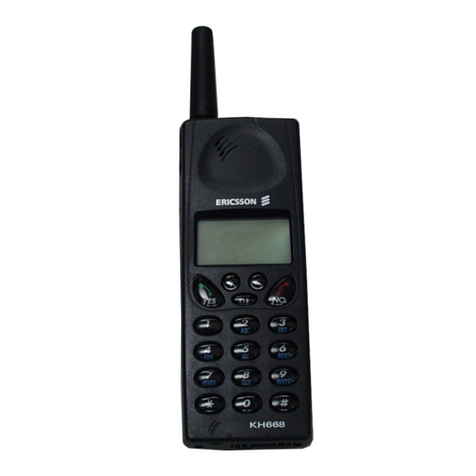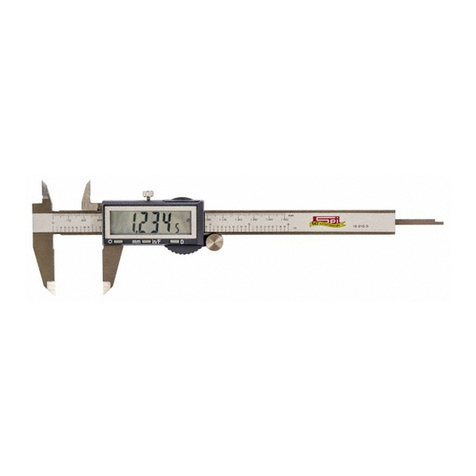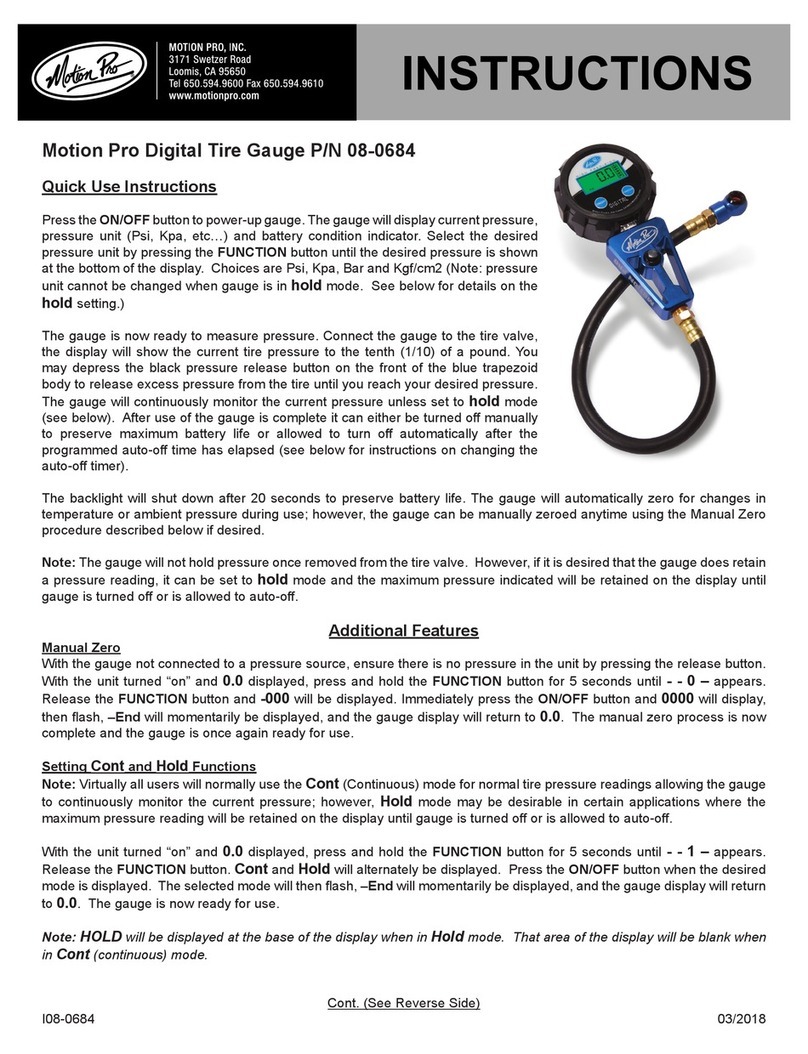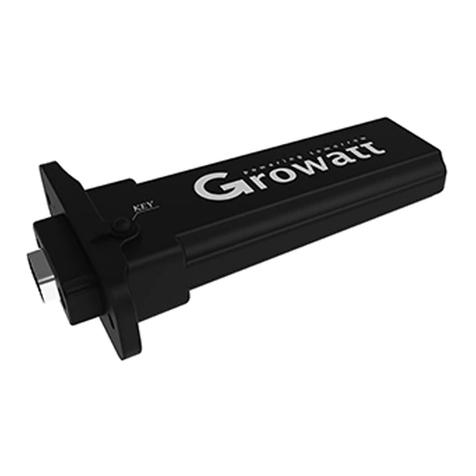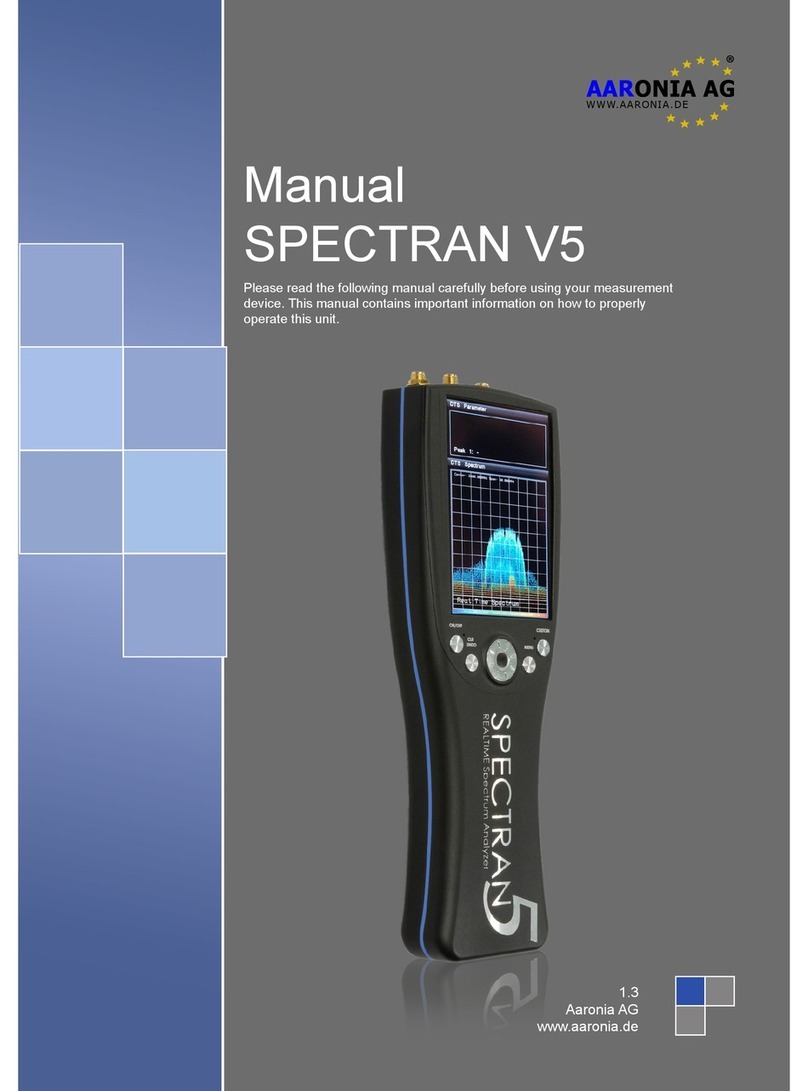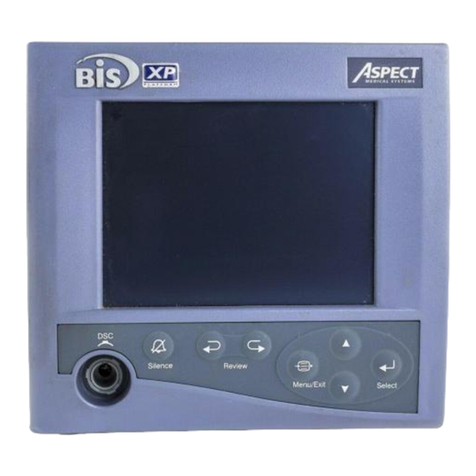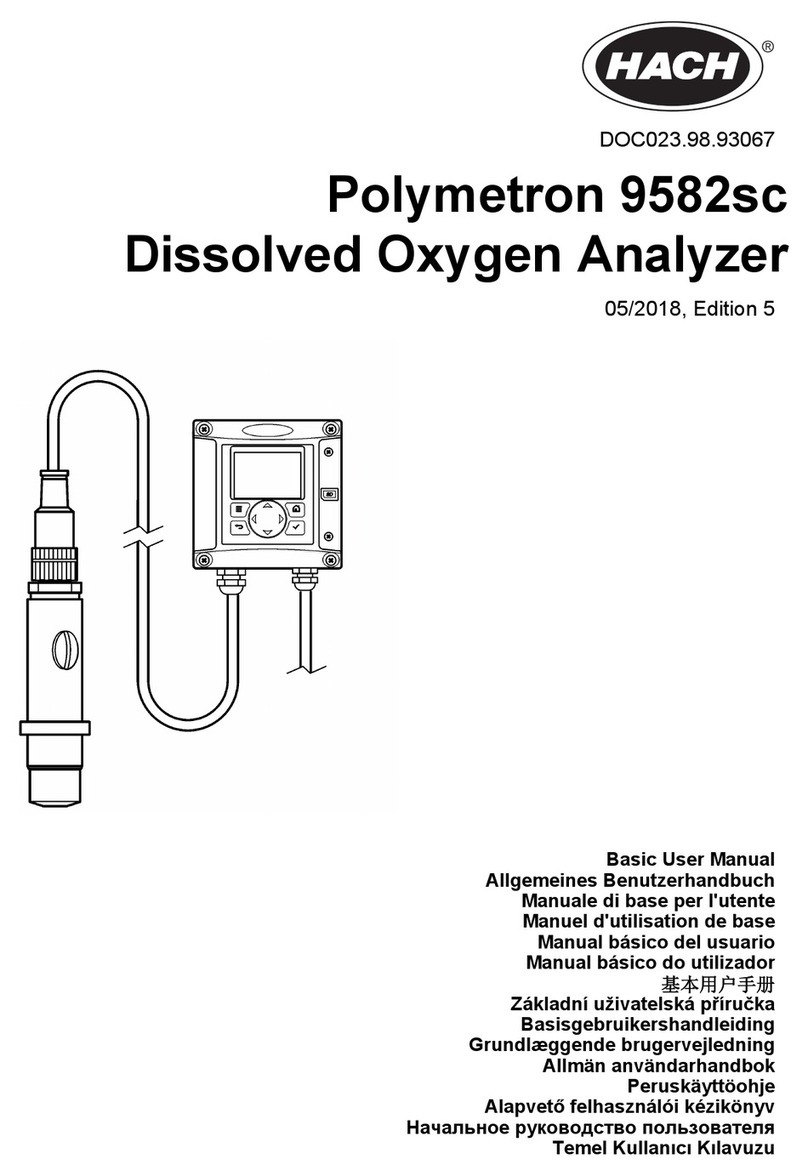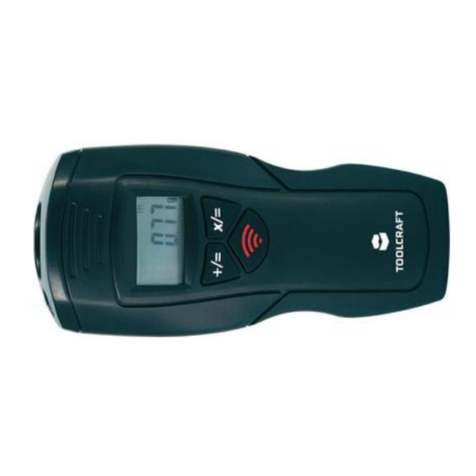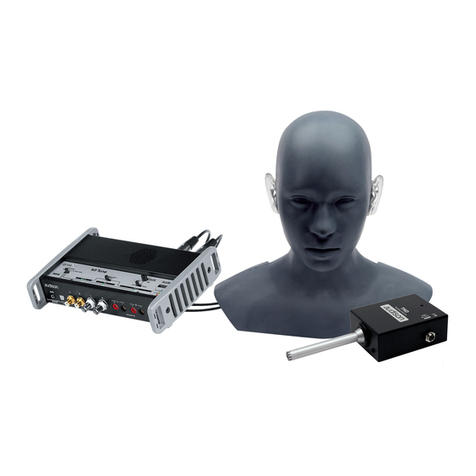Ericsson R310s User manual

Trouble Shooting Guide, Standard
4/00021-2/FEA 209 544/31 B Approved according to 1776-2/FEA 209 544
Trouble Shooting Guide, Standard
Applicable for R310s and R310sc
Contents
1 Explanations....................................................................................................................2
2 Network Problems...........................................................................................................4
3 On/Off Problems.............................................................................................................8
4 Audio Problems.............................................................................................................11
5 Display/Illumination Problems....................................................................................14
6 Capacity/Charging Problems.......................................................................................17
7 SIM Problems................................................................................................................18
8 Key Problems.................................................................................................................19
9 Alert Problems...............................................................................................................20
10 Other Problems.............................................................................................................22
11 Revision History............................................................................................................23

Trouble Shooting Guide, Standard
4/00021-2/FEA 209 544/31 B 2(23)
1 Explanations
For component placing see doc.1078-2/FEA 209 544/31.
1.1 Abbreviations
B: Crystal.
C: Capacitor.
D: Digital circuit.
F: Over voltage protection.
H: Buzzer, LED, pads for display.
J: Connector.
L: Coil.
N: Analogue circuit.
R: Resistor.
S: Keyboard pads.
U: BALUN Component that converts a balanced signal to unbalanced or the other way
around.
V: Transistor, diode.
X: Contact surface on the circuit board.
Z: Filter.
DCIO: DC voltage through the system connector for charging.
GND: Ground.
LED3K: Signal that activates the background illumination.
ONSWAn: Voltage from the On/Off key that starts the phone.
RTC: Real Time Clock. Clock that keeps track of the time.
SIMCLK: Signal from the processor used for communication to SIM, clock signal.
SIMDAT: Signal from the processor used for communication to SIM, data signal.
SIMRST: Signal from the processor used for communication to SIM, reset signal.
SIMVCC: Feed voltage for SIM.
VBATT: Battery voltage.
VCORE: DC voltage for the processor and memory at, for instance, stand by mode.
Lower than VDIG.
VDIG: DC voltage for the processor and memory.
VDSPC: DC voltage for the DSP (Digital Signal Processor).
VLCD: DC voltage that controls the contrast for the display.
VRAD: DC voltage for the radio part except for the synthesizer.

Trouble Shooting Guide, Standard
4/00021-2/FEA 209 544/31 B 3(23)
V380B: DC voltage for the radio part.
VRTC: DC voltage for the Real Time Clock.
VVCO: DC voltage for the synthesizer.
I2C: Communications standard for two-way communication using only 2 wires,
clock and data.

Trouble Shooting Guide, Standard
4/00021-2/FEA 209 544/31 B 4(23)
1.2 Pin Placing
Single diode (PIN diode) Electrolytic capacitor Double diode or single
transistor
Five pin circuit (usually
voltage regulator) Six pin circuit Eight pin circuit
Ten pin circuit Crystal N200
N330 and N331 N551 J603
X100
2 Network Problems

Trouble Shooting Guide, Standard
4/00021-2/FEA 209 544/31 B 5(23)
2.1 Find out if the fault is RX- or TX-related
Connect the phone to a GSM test instrument and try to get SERV at an input signal strength
of -68.5dBm.
If the phone does not get SERV at one or both bands, go to section 2.2.
If the phone gets SERV, go to section 2.3.
2.2 The phone does not get SERV
Open the phone and check for liquid damage. Make sure that the antenna connector in the
frame is not mechanically damaged, dirty or oxidised. Clean or replace it if it is needed. Also
check that the antenna connector surface on the board is clean and that it is not oxidised.
Check the soldering of N234, N200, Z200, Z201 and N201.
Measure the resistance of R220, R221, R222 and R223 (all 2.7 kohms).
Replace it if it is incorrect.
Check that C312 is correctly soldered.
If the fault is not found so far, the problem is probably within the LO part or the losses in the
signal path might be too large. It is also possible that the feed voltages are incorrect. Power up
the board and start it by pressing the On/Off key.
Measure the VRAD voltage on C501, on the pin close to N700 (3.8V).
If the voltage is incorrect, send the unit on according to the local company directives.
Measure the V380B voltage on C500, on the pin close to R427 (3.8V). If the voltage is
incorrect, send the unit on according to the local company directives.
Measure the VVCO voltage on pin 5 of N502 (3.8V).
If the voltage is correct, go to section 2.2.1.
If the voltage is incorrect, measure the voltage on L500 (VBATT).
If the voltage on L500 is correct, measure the voltage on V500, on the pin close to C401 (4.7
V).
If the voltage on V500 is correct, measure the voltage on pin 1 of N502 (4.7 V).
If the voltage on pin 1 of N502 is correct, measure the voltage on pin 3 of N502 (3.8V).
If the voltage on pin 3 of N502 (3.8V) is correct, replace N502.
If the voltage on pin 3 of N502 (3.8V) is incorrect send the unit on according to the local
company directives.
If the voltage on pin 1 of N502 is incorrect send the unit on according to the local company
directives.
If the voltage at V500 is 3.8V, replace V500, otherwise send the unit on according to the local
company directives.
If the voltage at L500 is incorrect, measure the resistance of L500 (0 ohms).
If the resistance is correct, send the unit on according to the local company directives.
If the resistance is too high, replace L500.
2.2.1 Check the feed voltages
VRAD voltage for N234:

Trouble Shooting Guide, Standard
4/00021-2/FEA 209 544/31 B 6(23)
Measure the voltage on pin 5 of N234 (3.8V).
If the voltage is incorrect, measure the resistance of L211 (0 ohms).
If the resistance is incorrect, replace L211.
If the resistance of L211 is correct, measure the resistance from L211 to ground (>1 Mohms).
If it is incorrect, replace C214, C211 and C212.
Measure the voltage on pin 47 of N234 (3.8V).
If the voltage is incorrect, measure the resistance of R345 (18 ohms).
If the resistance is incorrect, replace R345.
If the resistance of R345 is correct, measure the resistance from pin 47 of N234 to ground
(>0.5 Mohm).
If the resistance is low, replace C345.
Measure the voltage on pin 62 of N234 (3.8V).
If the voltage is incorrect, measure the resistance of L370 (0 ohms).
If the resistance is incorrect, replace L370.
If the resistance of L370 is correct, measure the resistance from L370 to ground (>0.5
Mohm).
If the resistance is low, replace C373 and R362.
The VVCO voltage for D300:
Measure the voltage on R303 (3.8 V).
If the voltage is incorrect, measure the resistance of R303 (18 ohms).
If the resistance is incorrect, replace R303.
If the resistance of R303 is correct, measure the resistance from R303 to ground (130 kohms).
If the resistance is low, replace C303.
If the fault remains, send the unit on according to the local company directives.
2.3 Connect a call at –68.5dBm input signal and power
level 5
If you are able to connect a call, go to section 2.4.
If you are not able to connect a call, open the phone and check for liquid damage.
Make sure that the antenna connector in the frame is not mechanically damaged, dirty or
oxidised. Clean or replace it if needed. Also check that the antenna connector surface on the
board is clean and not oxidised.
Check the soldering on N551, N400 and the components around them.
Try to connect a call again.
If you still are not able to connect a call, send the unit on according to the local company
directives.

Trouble Shooting Guide, Standard
4/00021-2/FEA 209 544/31 B 7(23)
2.4 Read the RX-level while call is connected
Make sure that the output power is 31-35 dBm for GSM power level 5 and that the RX-level
value is 43±3 steps.
Lower the input signal to –102dBm and make sure that the RX-level value is 6-12 steps and
that the RX-quality value is 0-2 steps.
If the values are within the limits, but you are not able to connect a call on the “real” net,
make sure that the phone has not been locked out of the system due to theft.
If the RX-level value is too high the phone needs to be calibrated, send the unit on according
to the local company directives.
If the RX-level value is less than 38 steps at an input signal of –68.5dBm or less than 5 steps
at an input signal of –102dBm then the fault is RX-related.
Open the phone and check for liquid damage.
Make sure that the antenna connector in the frame is not mechanically damaged, dirty or
oxidised. Clean the connector or replace it if it is needed. Also check that the antenna
connector surface on the board is clean and not oxidised.
Check the soldering on N200, Z200, Z201 and N201.
Remove L204 and measure the resistance from pin 2 of Z200 to ground (>100 kohms). The
resistance is usually only a few ohms when Z200 is faulty.
If the resistance is incorrect, replace Z200 and mount L204.
If the fault remains the unit may have to be calibrated, send the unit on according to the local
company directives.

Trouble Shooting Guide, Standard
4/00021-2/FEA 209 544/31 B 8(23)
3 On/Off Problems
3.1 Type of fault
Make an external visual check of the phone:
Make sure that the battery connectors are intact, clean and fully functional.
Make sure that there is no liquid damage on the system connector. Replace if needed.
Insert a fully charged battery and press the On/Off key.
• If the phone starts without the On/Off key being pressed, go to section 3.2.
• If the phone starts (lights up the background illumination, asks for SIM/Pin, seeks net…),
check the charging function by connecting a charger to the system connector.
If the charging function is faulty, go to chapter 6 (“Capacity/Charging problems”).
If the charging works, there is probably nothing wrong with the phone or the fault is
intermittent.
• If the phone does not start, insert a dummy battery and keep the On/Off key pressed.
If the phone consumes more than 50 mA, go to section 3.3.
If the phone consumes 15-30 mA, go to section 3.4.
If the phone consumes less than 15 mA, go to section 3.5.
• If the phone turns off after a few seconds, go to section 3.6.
3.2 Starts immediately after inserting a battery
Open the phone and check for liquid damage.
Replace the dome foil. Make sure that the keypads are clean before mounting a new one.
If the fault remains, send the unit on according to the local company directives.
3.3 Consumes more than 50mA
Open the phone and check for liquid damage.
Power up the board and press the On/Off key.
Measure the voltage on V500, on the pin close to C401 (4.7 V).
If the voltage is 3.8 V on both sides, replace V500.
If the fault remains, send the unit on according to the local company directives.
3.4 Consumes 15-30mA
Open the phone and check for liquid damage.
Try to program the phone in the flash programmer.
If programming the phone is impossible, measure the resistance over C615 (>50 kohms).

Trouble Shooting Guide, Standard
4/00021-2/FEA 209 544/31 B 9(23)
If the resistance over C615 is less, replace V607.
If that does not help, replace C615.
If the resistance over C615 is correct send the unit on according to the local company
directives.
3.5 Consumes less than 15 mA
3.5.1 Consumes no current
Open the phone and check for liquid damage.
Make sure that X100 is not dirty, damaged or incorrectly soldered.
Replace the dome foil. Make sure that the keypads are clean before mounting a new one.
Power up the board.
Measure the VBATT voltage on C400, on the pin close to V400 (3.8V).
If the VBATT voltage is correct, measure the voltage on pin 2 of V610 (3.8V).
If the voltage on V610:2 is correct, replace V610.
If the voltage on V610:2 is incorrect, send the unit on according to the local company
directives.
If the VBATT voltage on C400 is incorrect, replace X100.
If the fault remains, send the unit on according to the local company directives.
3.5.2 Consumes less than 15 mA
Open the phone and check for liquid damage.
Power up the board and start it by pressing the On/Off key.
Measure the VDIG voltage on C703, on the pin close to R706 (2.7 V).
If the voltage is incorrect, measure that the resistance of C703 is more than 150 kohms.
If the resistance is correct, send the unit on according to the local company directives.
If the resistance is incorrect, replace C703.
Measure the VCORE voltage at C702, on the pin close to R428 (2.5 V).
If the voltage is incorrect measure the resistance of C702 (>200 kohms).
If the resistance is correct, send the unit on according to the local company directives.
If the resistance is incorrect, replace C702.
If VDIG and VCORE are correct measure the VDSPC voltage on N740 pin 5 (1.8 V).
If the VDSPC voltage is incorrect, replace N740.
If VDSPC is incorrect after the replacement, measure the resistance of C740 (>20 kohms).
Replace C740 if it is incorrect.
If the fault remains, send the unit on according to the local company directives.

Trouble Shooting Guide, Standard
4/00021-2/FEA 209 544/31 B 10(23)
3.6 Turns off after a few seconds
Open the phone and check for liquid damage.
Power up the board and start it by pressing the On/Off key.
Measure the VDIG voltage on C703, on the pin close to R706 (2.7 V)
If the voltage is incorrect, measure that the resistance of C703 is more than 150 kohms.
If the resistance is correct, send the unit on according to the local company directives.
If the resistance is incorrect, replace C703.
Measure the VCORE voltage at C702, on the pin close to R428 (2.5 V).
If the voltage is incorrect measure the resistance of C702 (>200 kohms).
If the resistance is correct, send the unit on according to the local company directives.
If the resistance is incorrect, replace C702.
Measure the VDSPC voltage on N740 pin 5 (1.8 V).
If the voltage is incorrect, replace N740.
If VDSPC is incorrect after the replacement, measure the resistance of C740 (>20 kohms).
Replace C740 if it is incorrect.
If the fault remains, send the unit on according to the local company directives.

Trouble Shooting Guide, Standard
4/00021-2/FEA 209 544/31 B 11(23)
4 Audio Problems
4.1 Type of fault
Connect a call from the phone that is to be tested to a reference phone.
Check the function of the microphone and the earphone.
If the phone sounds strange (there is noise, distortion or the sound is “chopped”), send the
unit on according to the local company directives.
Connect a handsfree unit to the system connector of the phone.
Check the functionality of the handsfree. Do this by first speaking into the reference phone
while listening to the handsfree speaker, and then speaking into the handsfree microphone
while listening to the earphone of the reference phone.
• If there is little or no sound in the earphone of the phone, go to section 4.2.
• If neither the handsfree speaker nor the earphone of the phone works, send the unit on
according to the local company directives.
• If the sensitivity of the microphone is poor (little or no sound in the reference phone), go
to section 4.3.
• If neither the handsfree microphone nor the microphone of the phone works, send the unit
on according to the local company directives.
• If neither the earphone nor the microphone of the phone works, send the unit on
according to the local company directives.
• If the handsfree microphone does not work, go to section 4.4.
• If the handsfree speaker does not work, go to section 4.5.
• If neither the handsfree speaker nor the handsfree microphone works, go to section 4.6.
4.2 Earphone does not work
Open the phone and check for liquid damage.
Make sure that the X810 and X811 connectors are not mechanically damaged or incorrectly
soldered.
Replace the earphone. Test the phone again.
If the fault remains, send the unit on according to the local company directives.
4.3 Microphone does not work
Open the phone and check for liquid damage.
Check that the microphone contact surface on the board is clean. Replace the microphone
rubber gasket and the microphone.
Assemble the phone and test the microphone again.

Trouble Shooting Guide, Standard
4/00021-2/FEA 209 544/31 B 12(23)
If the fault remains, open the phone and measure the resistance of R862 (0 ohm), R861 (1.5
kohms), R863 (1 kohm) and R864 (22 kohms). Replace the corresponding component if it is
incorrect.
If all the resistances are correct, replace C863.
If the fault remains, send the unit on according to the local company directives.
4.4 Handsfree microphone does not work
The fault arises when the audio path is interrupted somewhere between the handsfree
microphone (connected through the system connector) and the input of N800. The audio path
is shown in Fig. 4.1.
Fig. 4.1
Open the phone and check for liquid damage, especially around the system connector.
Make sure that the system connector is not damaged.
Make sure that all the components in Fig. 4.1 (R802, R803, R805, R850, R862, R825, C810,
C812, C817, C850 and C862) are mounted on the circuit board.
Measure the resistance of C810 (>60 kohms), C812 (>1 Mohm), C817 (>1 Mohm), R802 (3.9
kohms), R805 (15 kohms), R803 (1 kohm), R862 (0 ohm), R850 (47 kohms) and C850 (>90
kohms). Replace the corresponding component if it is incorrect.
If the fault remains, send the unit on according to the local company directives.
4.5 Handsfree speaker does not work
The fault arises when the audio path is interrupted somewhere between the output of N800
and the handsfree microphone (connected through the system connector). The audio path is
shown in Fig. 4.2.

Trouble Shooting Guide, Standard
4/00021-2/FEA 209 544/31 B 13(23)
Fig. 4.2
Open the phone and check for liquid damage, especially around the system connector.
Make sure that the system connector is not damaged.
Measure the resistance of R804 (100 kohms), R640 (82 ohms) and C813 (>1 Mohm). Replace
the corresponding component if it is incorrect.
Measure the resistance from C640 to pin 10 of J602 (0 ohms).
If the resistance is incorrect, the foil is damaged. Send the unit on according to the local
company directives.
If the fault remains, send the unit on according to the local company directives.
4.6 Neither the handsfree microphone nor the handsfree
speaker works
Replace J602.
If the fault remains, send the unit on according to the local company directives.

Trouble Shooting Guide, Standard
4/00021-2/FEA 209 544/31 B 14(23)
5 Display/Illumination Problems
5.1 Type of fault
Insert a fully charged battery into the phone and start it up by pressing the On/Off key.
• If the phone does not start, go to chapter 3 (“On/Off problems”).
• If the display is missing one or more segments, go to section 5.2.
• If nothing is shown in the display, go to section 5.3.
• If the background illumination does not work, go to section 5.4
• If the top indicator does not start to flash green when the phone has got SERV, go to
section 5.5.
When the phone has got SERV and the top indicator flashes green, reduce the battery voltage
to 3.2V. By doing this, the top indicator should start to flash red, the battery indicator should
show an empty flashing battery and the phone should warn with a beep. If none of these
things happens, the phone needs a battery calibration.
• If the phone beeps and the battery indicator shows an empty flashing battery but the top
indicator does not flash red, go to section 5.5.
5.2 Segments are missing
Replace the display and try again.
5.3 Nothing is shown in the display
Open the phone and check for liquid damage.
Power up the board and start it up without the display mounted.
Fig. 5.1
Pad 1: VLCD 5.8 V
Pad 2: VDD 2.75 V
Pad 3: SDA 2.75 V
Pad 4: VSS 0 V
Pad 5: SCL 2.75 V

Trouble Shooting Guide, Standard
4/00021-2/FEA 209 544/31 B 15(23)
Measure the voltages on the display pads (H623, Fig. 5.1).
If SDA or SCL voltage is missing, check the VDIG voltage (2.75V).
If the VDIG voltage is correct, measure the resistance of R619 (6.8 kohms), R620 (6.8
kohms), R615 (0 ohm) and R614 (0 ohm). Also measure the resistance of C670, C671, C672,
C673 and C674 (>1Mohm). If any of the resistances are incorrect, replace the corresponding
component.
If the fault remains, change the display.
5.4 Background illumination glows faintly or does not
work at all
Open the phone and check for liquid damage.
Clean X750 if needed.
Replace the illumination panel.
Power up the board and start it by pressing the On/Off key.
NOTE! All measurements are done with the illumination on. The illumination is only lit
for about 25 seconds, press any key to light it up again.
Measure the voltage on pin 6 and 8 of N750 (26 V).
If the voltage is incorrect, measure the voltage on pin 10 (3.8 V), pin 5 (2.7 V), pin 2 (0.9 V)
and on pin 4 (1.4 V) of N750.
If the voltage on pin 10 (3.8 V) is incorrect, measure the resistance of L750 (23 ohms), C751
(>1 Mohm) and the resistance from L750 to VBATT (0 ohm).
If any of the L750 or C751 resistances are incorrect, replace the corresponding component.
If the resistance from L750 to VBATT is incorrect, the foil is damaged. Send the unit on
according to the local company directives.
If the voltage on pin 5 (2.7 V) is incorrect, send the unit on according to the local company
directives.
If the voltage on pin 2 (0.9 V) or 4 (1.4 V) is incorrect, send the unit on according to the local
company directives.
If the voltages on pin 10,5,2 and 4 are correct, replace L750, C750 and R750.
If the fault still remains, replace N750.
If the fault remains, send the unit on according to the local company directives.

Trouble Shooting Guide, Standard
4/00021-2/FEA 209 544/31 B 16(23)
5.5 Red or green top indicator does not work
Open the phone and check for liquid damage.
Make sure that the double LED (H650) is correctly soldered.
If the soldering is correct, power up the board and start it by pressing the On/Off key.
Measure the voltage on pin 1 of H650 (2.7 V).
If the voltage is correct, replace H650 (assemble the phone and test as described in 9.1).
If it is incorrect, measure the resistance of R646 (220 ohms).
If the resistance is incorrect, replace R646.
If the resistance is correct the foil is damaged. Send the unit on according to the local
company directives.
If the fault remains, send the unit on according to the local company directives.

Trouble Shooting Guide, Standard
4/00021-2/FEA 209 544/31 B 17(23)
6 Capacity/Charging Problems
Make a visual check of the battery connector and the system connector. Replace them if
needed.
Insert a fully charged battery into the phone and start it up by pressing the On/Off key. Turn
the phone off and connect a charger to the system connector to make sure that a fault really
exists.
Open the phone and check for liquid damage.
Measure the resistance of R710 (0.1 ohms). If it is incorrect, send the unit on according to the
local company directives.
Measure the resistance of R711 (0 ohms). Replace it if it is incorrect.
If the resistances are correct, replace V710.
If the fault remains, send the unit on according to the local company directives.

Trouble Shooting Guide, Standard
4/00021-2/FEA 209 544/31 B 18(23)
7 SIM Problems
7.1 What is SIM-fault
Insert a functional SIM-card and a charged battery into the phone.
If “Wrong card” or “Insert correct card” is displayed on the display when starting the
phone it means that the phone is SIM-locked.
NOTE! If the phone shall be SIM-locked, make sure that a correct SIM-card is used.
If the fault remains, send the unit on according to the local company directives.
If the phone displays “Phone lock” on the display it means that the customer has locked the
phone with a personal code. It will be unlocked in the reset program. (Available in the Built
Swap process)
If “PIN:” or “Enter PIN:” is displayed, it means that the SIM-card has been locked with a
personal code.
It is only SIM-fault if “Insert card” is displayed.
7.2 Type of fault
Open the phone and check for liquid damage.
Replace J603.
Measure the resistance between pin 1 and pin 5 of J603 (1-15 kohms).
If the resistance is low, replace C734 and C736.
If the fault remains, replace C735.
Measure the resistance of R734 (10 kohms). Replace it if it is incorrect.
Measure the resistance of R730 (15 kohms). Replace it if it is incorrect.
Measure the resistance of R733 (33 ohms). Replace it if it is incorrect.
Measure the resistance of R731 (33 ohms). Replace it if it is incorrect.
Measure the resistance of R732 (6.8 ohm). Replace it if it is incorrect.
If the fault remains, send the unit on according to the local company directives.

Trouble Shooting Guide, Standard
4/00021-2/FEA 209 544/31 B 19(23)
8 Key Problems
8.1 Type of keyboard fault
Insert a fully charged battery and a correctly working SIM-card into the phone. Start it up by
pressing the On/Off key.
• If the phone does not start at all, go to chapter 3 (“On/Off problems”).
• If the phone starts, but none of the keys are functional, go to section 8.2.
Press all the keys (including the volume keys) to verify which of the keys that are working.
The verification is most easily done this way:
Go to “Menu/Settings/Sounds&Alerts/Key sound” and choose “Click”.
Press the “1”, “2”, “3”…”*”, “0”, “#” keys. A clicking sound should be heard and the corre-
sponding symbol should appear in the display at every key pressed. Then press the “clr”,
“Yes”, “No”, “<” and “>” keys. The “clr” key makes the phone erase the symbols in the
display one by one. When pressing the “Yes” key the phone should try to connect a call and
pressing the “No” key should make it disconnect the call while the “<” and “>” keys make
you skim through the menu.
When you press the volume keys you should get information about Date, Profile, Standby
time and Talk time shown in the display.
• If only the volume keys are faulty, go to section 8.3.
8.2 One or more of the keys are out of order
Open the phone and check for liquid damage.
Remove the dome foil, clean the pads and mount a new dome foil.
Test the keys as described in 8.1 again.
If the fault remains, send the unit on according to the local company directives.
8.3 Volume keys are out of order
Replace the volume switch.
If the fault remains, send the unit on according to the local company directives.

Trouble Shooting Guide, Standard
4/00021-2/FEA 209 544/31 B 20(23)
9 Alert Problems
9.1 Type of fault
Insert a dummy battery and a correctly working SIM-card into the phone and start it by
pressing the On/Off key. Wait for the phone to get SERV (to the test instrument or on the
net).
If the phone does not beep at startup, use the menu to increase the ring volume.
• If there is little or no sound, go to section 9.2.
Use the menu to set the vibrator to “ON” mode.
• If the phone does not vibrate when the settings are stored, go to section 9.3.
9.2 Buzzer faint or dead
Open the phone and check for liquid damage.
Make sure that the buzzer (H600) is correctly soldered.
If the soldering is correct, replace H600.
Assemble the phone and try again as described in 9.1.
Open the phone, power up the board and start it by pressing the On/Off key.
Measure the voltage on pin 2 of H600 (3.8 V, Fig. 9.1).
Fig. 9.1
If the voltage is incorrect, replace R603.
If replacing R603 does not help the foil is damaged. Send the unit on according to the local
company directives.
Measure the resistance of R651 (1 kohm). Replace it if it is incorrect.
Replace V606.
If that does not help, replace V605.
9.3 Vibrator does not work
Open the phone and check for liquid damage.
Make sure that the vibrator connector pads and X680 are not dirty or damaged.
Power up the board and start it by pressing the On/Off key.
Other manuals for R310s
2
This manual suits for next models
1
Table of contents
Other Ericsson Measuring Instrument manuals
Popular Measuring Instrument manuals by other brands
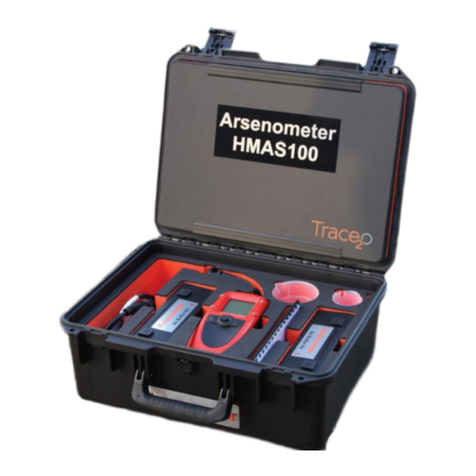
Trace2O
Trace2O ARSENOMETER HMAS100 instruction manual

Bushnell
Bushnell neo 368050 user manual
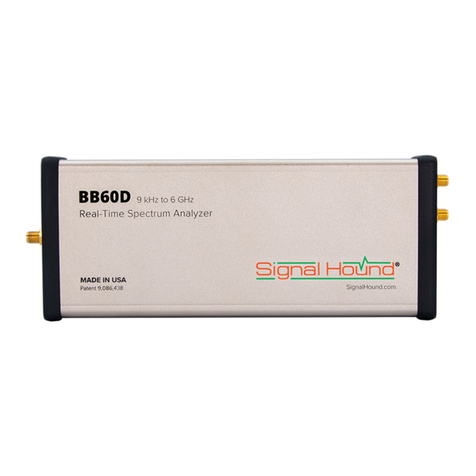
Signal Hound
Signal Hound BB60D product manual

ICS Schneider Messtechnik
ICS Schneider Messtechnik GA35 operating instructions

CARLO GAVAZZI
CARLO GAVAZZI EM530DINAV23XO1X user manual
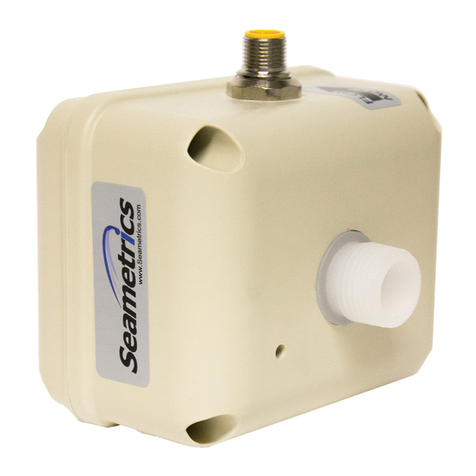
Seametrics
Seametrics PE202 instructions
